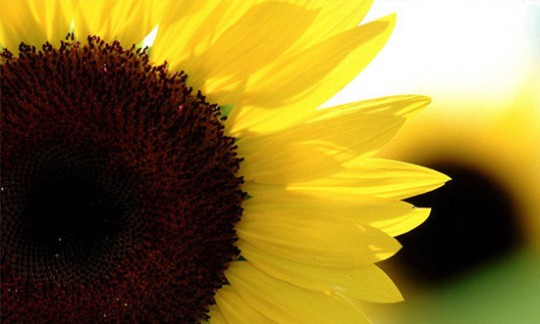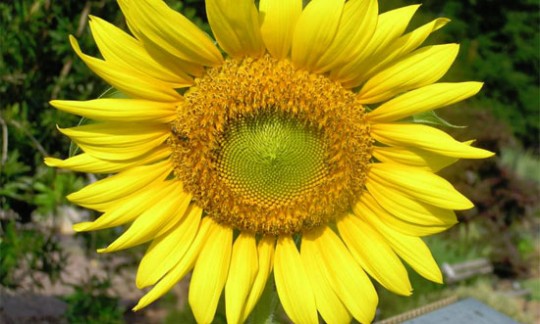Sunny Days: Growing Sunflowers
August 21, 2010
 Sunflowers not only make the garden beautiful but can also be used to bring the beauty of outdoors inside.
Sunflowers not only make the garden beautiful but can also be used to bring the beauty of outdoors inside.
It may be towards the end of summer, but you can still plant sunflowers and enjoy them during the fall. In north Florida, try to complete sunflower planting by the third week in August. Depending on the variety, sunflowers will bloom about 55 to 75 days after planting – 60 days is a good average. Some sunflowers are sensitive to day length and may yield shorter plants and earlier bloom when planted in late summer. This corresponds to the reduction in daylight hours as summer progresses toward autumn.
To begin, choose cultivars that fit your landscape. There are now more sunflowers than just the seed bearing giants that many gardeners are familiar with. Just take a look at the gardening catalogs.
 Sunflowers can be broadly divided into two types: those grown for production of edible seeds and those grown as ornamentals and cut flowers. Most gardeners will be interested in the ornamental sunflowers, also known as Helianthus annuus.
Sunflowers can be broadly divided into two types: those grown for production of edible seeds and those grown as ornamentals and cut flowers. Most gardeners will be interested in the ornamental sunflowers, also known as Helianthus annuus.
Sunflowers come in heights ranging from less than one foot to ten feet and also come in a wide range of flower colors. While brilliant yellow will always be popular, you can also choose from creamy white, bronze, mahogany, rusty red, burgundy and orange. Some types produce flowers with more than one color. The center disk of the sunflower also adds to the display and goes through color changes as the flower matures and seeds form.
Sunbright, Sunrich Lemon, Sunrich Orange, Soraya and Moulin Rouge are some that are recommended for Florida.
For best bouquet results, choose cultivars that are pollen-less to prevent pollen from shedding onto a tablecloth or other flowers in an arrangement.
If you want to grow sunflowers for the delicious, nutritious seeds, make sure you choose varieties bred for seed production, such as Mammoth Russian – also known as Mammoth, Russian Giant and Gray Stripe. These tall-growing sunflowers produce a single enormous flower at the top of the plant. To grow a really big seed head, apply general-purpose fertilizer when the flower head begins to appear. Just be sure to place them so that you can stake them if necessary.
 Sunflowers are true to their name, they need to be grown in full sun. Prepare a sunflower bed as you would for planting most vegetables. They tolerate heat and dry conditions and almost any soil type. The pH preference is 6.5 to 7.5 and the addition of composted organic matter is beneficial.
Sunflowers are true to their name, they need to be grown in full sun. Prepare a sunflower bed as you would for planting most vegetables. They tolerate heat and dry conditions and almost any soil type. The pH preference is 6.5 to 7.5 and the addition of composted organic matter is beneficial.
Plant seeds about one-quarter inch deep directly into a prepared garden bed. It’s common to plant sunflowers into landscape beds, and many gardeners include a row of sunflowers in spring and fall vegetable gardens. After sowing the seeds, water the bed well and thesun water it as needed to keep the soil moist – even lightly every day if the weather is dry.
Sunflowers should be harvested in early morning before 10:00 a.m. It is best to cut the stems and place them in warm water right away for best results.
The versatility and variety of today’s sunflowers offer something for almost every garden and gardener. If you haven’t tried this plant lately, give it another look.
Theresa Friday is the Residential Horticulture Extension Agent for Santa Rosa County.
Comments
One Response to “Sunny Days: Growing Sunflowers”




love sun flowers to look at so do my brids.. I think the y are the prettest of all flowers!! Ilive in lake butler fl.